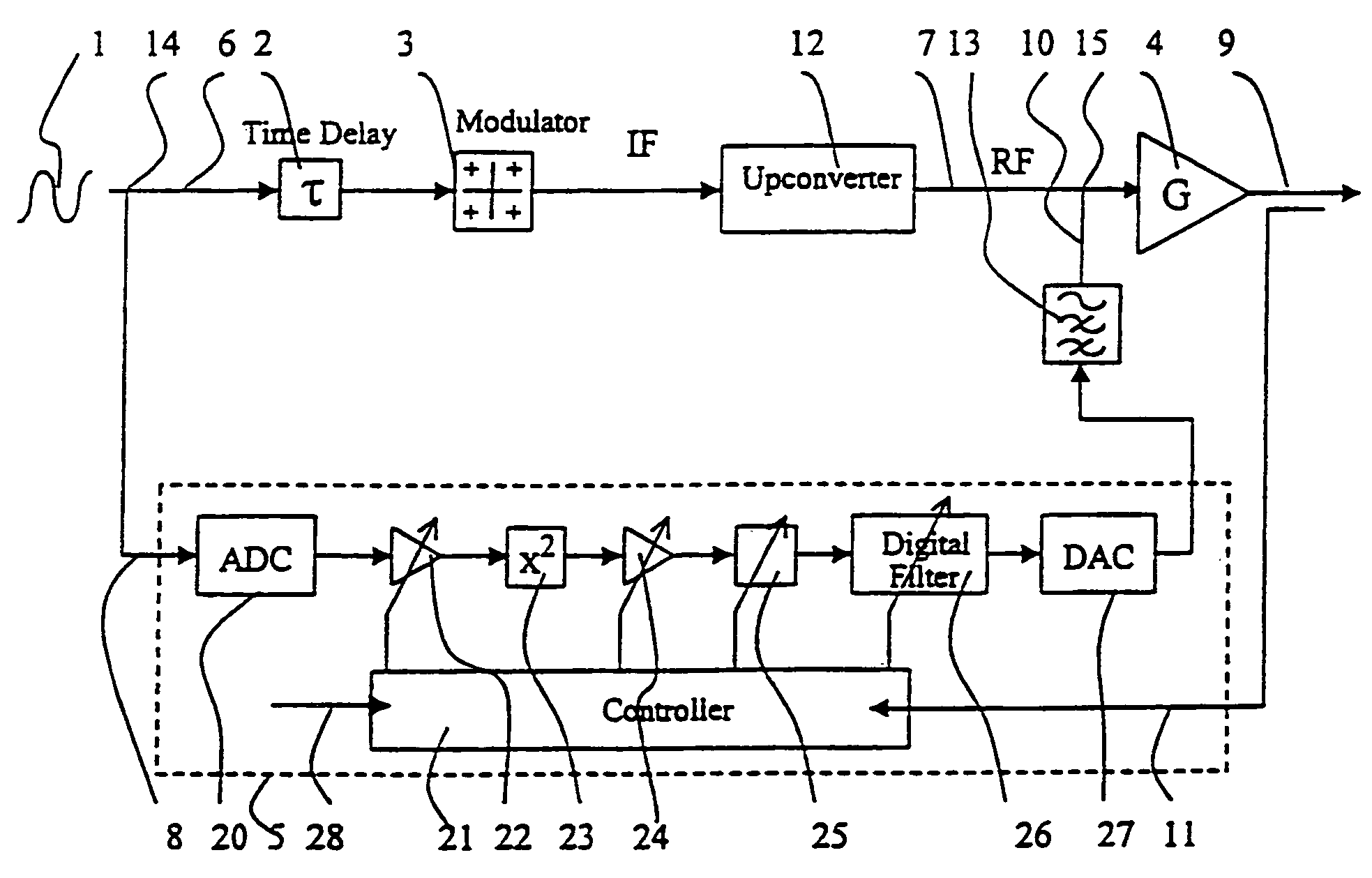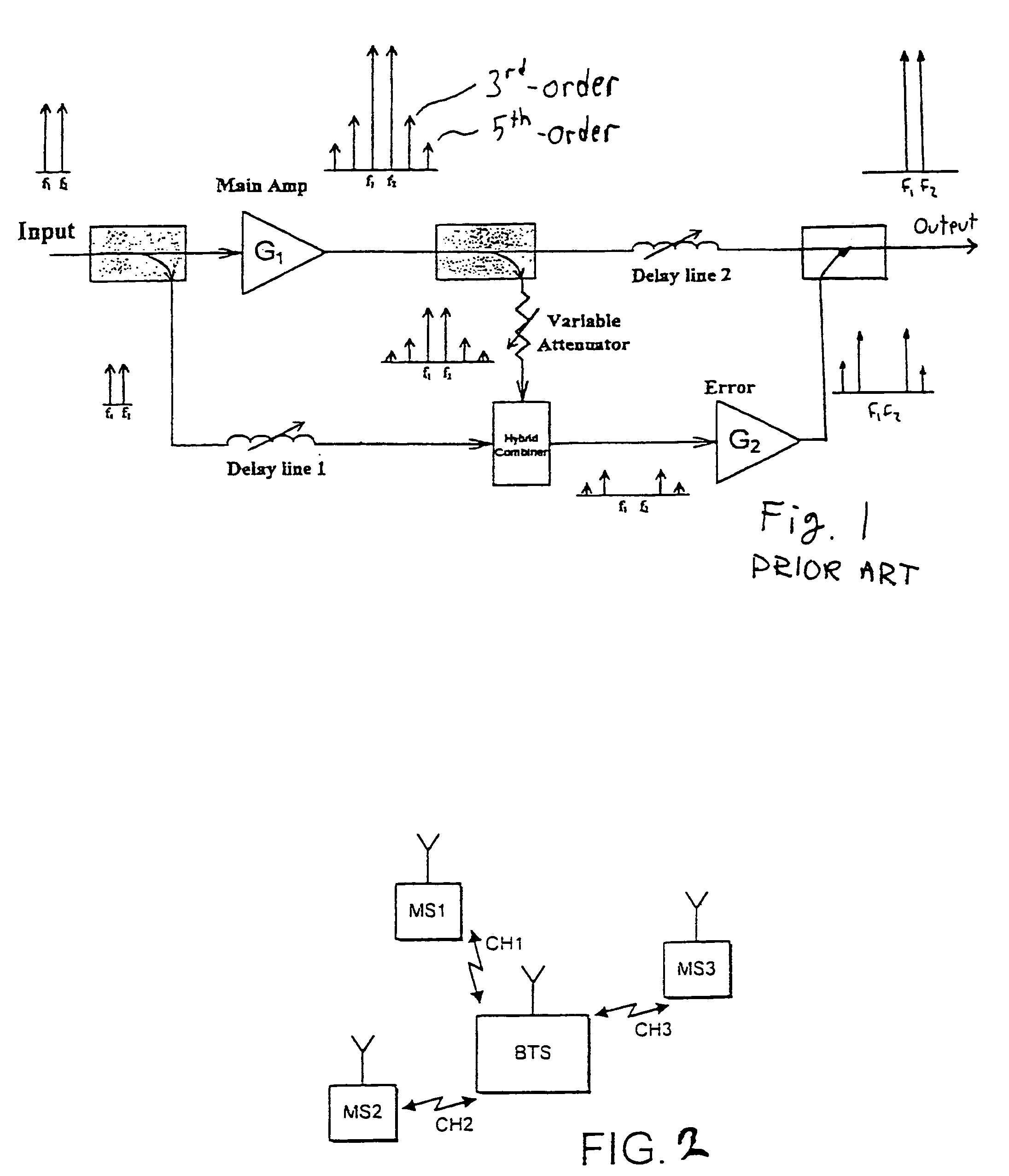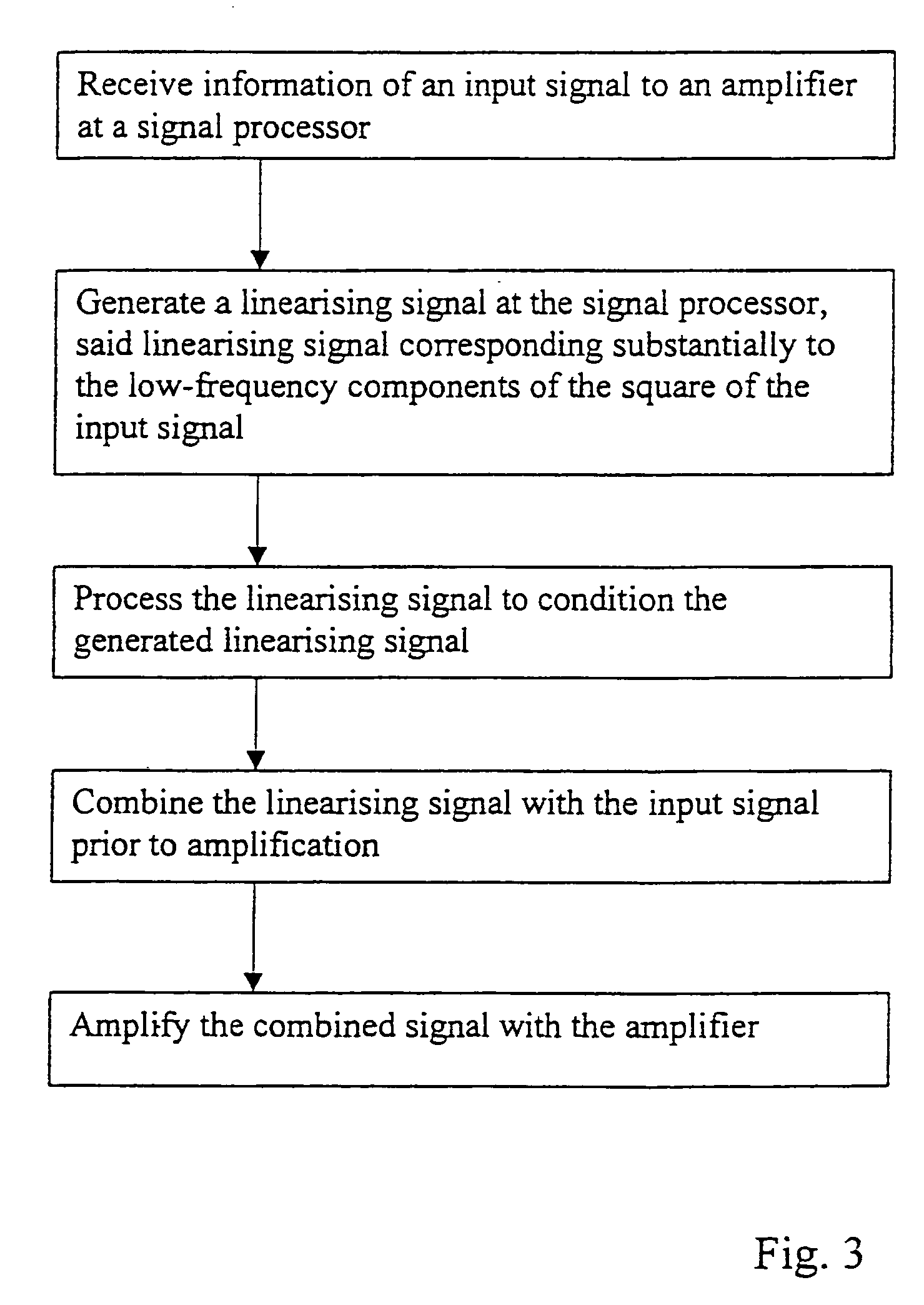Linearization of an amplifier
a linearization and amplifier technology, applied in amplifiers, amplifier modifications to reduce noise influence, electrical devices, etc., can solve the problems of mixing between the different frequency components, affecting reducing the quality of the transmission, so as to reduce the distortion of intermodulation and achieve accurate reproduction, the effect of reducing the distortion
- Summary
- Abstract
- Description
- Claims
- Application Information
AI Technical Summary
Benefits of technology
Problems solved by technology
Method used
Image
Examples
Embodiment Construction
[0028]Reference will be first made to FIG. 2 illustrating a system in which the embodiments of the invention may be employed. The exemplifying system is a cellular mobile radio communication system allowing a plurality of mobile stations MS1, MS2, MS3 to communicate with a base (transceiver) station BTS in a common cell via respective channels CH1, CH2, CH3. Although not shown, the mobile stations may also move from one cell to another cell. The radio communication between a transmitting station and a receiving station may be implemented in any appropriate manner and may be based on any communication standard. Therefore the radio link as such will not be described in more detail herein. Examples of cellular communication systems include, without being limited to, standards such as AMPS (American Mobile Phone System), DAMPS (Digital AMPS), GSM (Global System for Mobile communications) or various GSM based systems (such as GPRS: General Packet Radio Service), CDMA (Code Division Multi...
PUM
 Login to View More
Login to View More Abstract
Description
Claims
Application Information
 Login to View More
Login to View More - R&D
- Intellectual Property
- Life Sciences
- Materials
- Tech Scout
- Unparalleled Data Quality
- Higher Quality Content
- 60% Fewer Hallucinations
Browse by: Latest US Patents, China's latest patents, Technical Efficacy Thesaurus, Application Domain, Technology Topic, Popular Technical Reports.
© 2025 PatSnap. All rights reserved.Legal|Privacy policy|Modern Slavery Act Transparency Statement|Sitemap|About US| Contact US: help@patsnap.com



